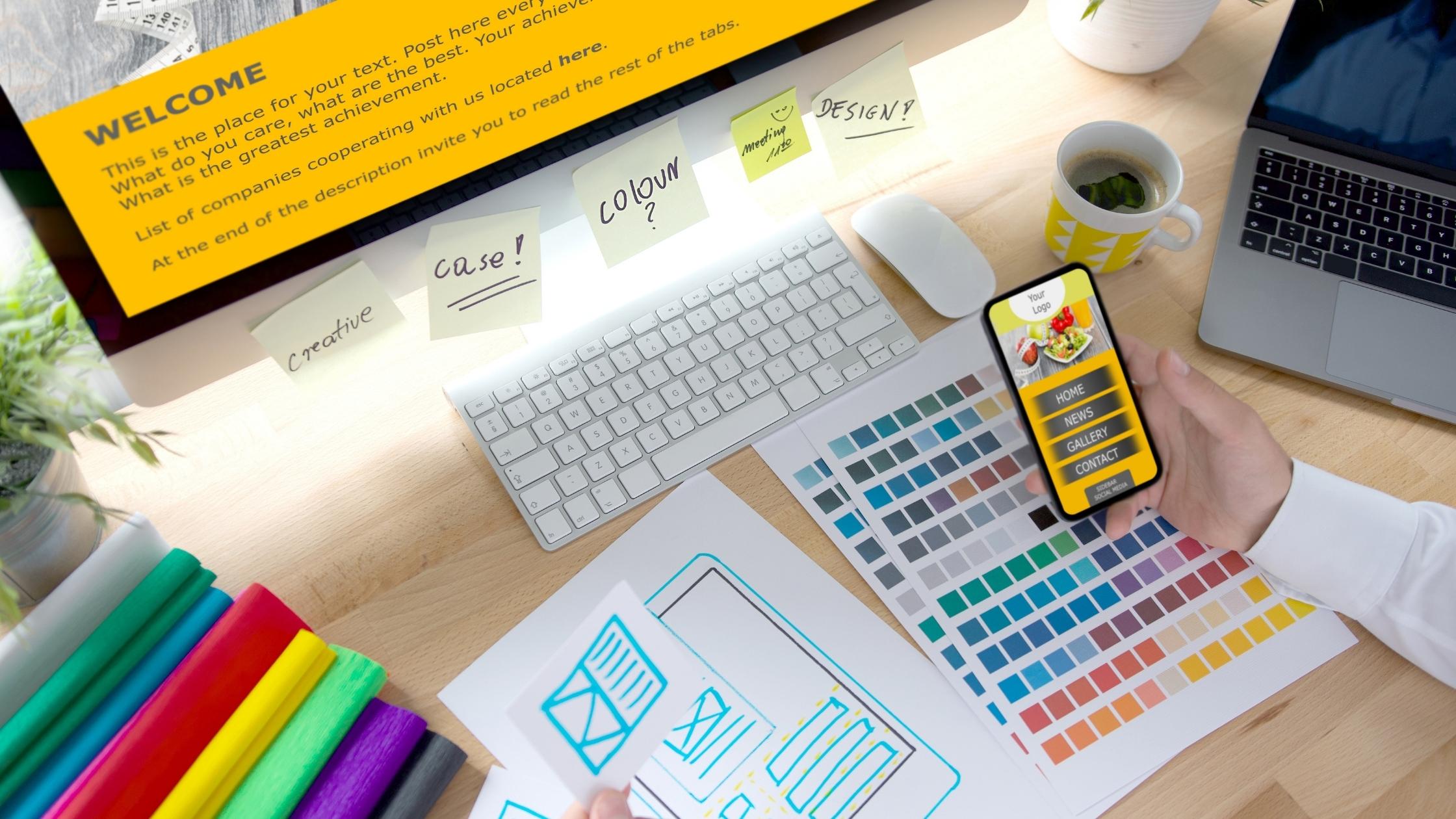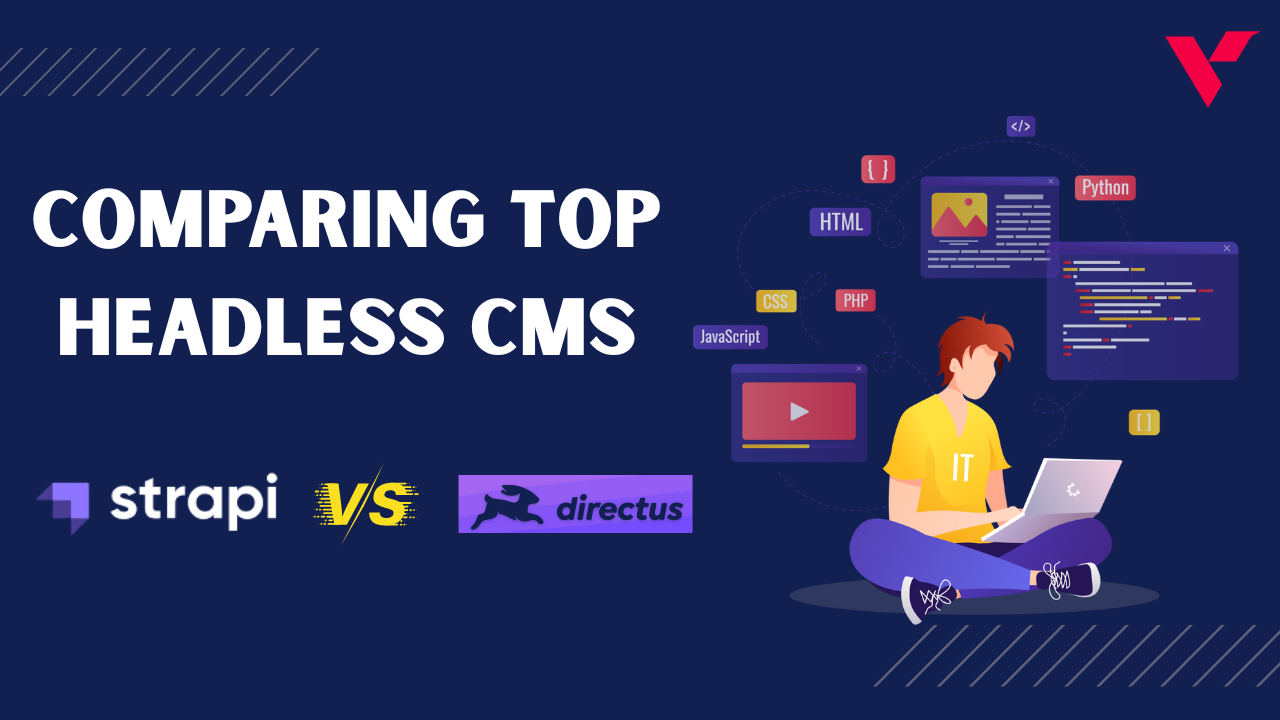Popular Tools by VOCSO
“There is a reason we see the world in colors and not in black and white.” Color possesses a language without words to influence the soul directly.
Just like colors bring beauty to every aspect of life – it also brings a website to life. Colors play a crucial role in website design. If used in a powerful, compelling, and intelligent way, it can add a lot of potency to your brand. It can help communicate the brand message, connect with the audience emotionally, and create brand recognition.
Every web design company occasionally struggled with selecting the right color and making them work harmoniously with the business message. It’s an art in itself, as colors speak louder than words.
Website design is more than just aesthetics, user experience, content, and fonts. Creative agencies need to understand color psychology and harmony. A strategically thought color palette can align well with your brand’s value and target market.
This article will help you understand the importance of color for effective and smart web designs and show how it works in practice.
Table of Contents
What is Color Psychology?
Color Psychology is about how color affects human behavior and deeply associates with emotions. Colors have the power to influence consumers, enable them to respond to your marketing messages, and help form a view of your brand.
Irrespective of your business industry – colors blend perfectly with every marketing plan. The right choice of colors can help hook each visitor’s attention and, ultimately, drive sales.
Color Psychology in web design is a crucial tool to drive those engagements and earn those clicks, registrations, or purchases.
When we see red and white color – the first product that comes to mind is Coco-Cola – isn’t it? Or how about the color association with the Google logo made of primary colors – Red, Yellow, Green, and Blue?
Different colors have different values, reactions, and emotional associations. Let us understand color connotations and their use in the digital plan.
Red – Color of Power, Energy, Passion, and Nostalgia
Red is a very emotionally intense color associated with power, courage, love, leadership, and determination. When used in website design, it conveys a sense of urgency and can promote direct action. If your goal is to increase sales, draw people’s attention, or make the visitor complete the move – you can use red. It is overstimulating color popular during sales or spreading any notice.
Blue – Color of Trust, Safety, Coolness, and Security
Widely used in the business world – especially in the security, insurance, or finance domain. It stimulates a sense of relaxation or coolness. You can use soft, calm shades of blue to relax your consumers, while vivid hues encourage credibility. Building loyalty and trust will help boost sales.
Green – An evergreen color associated with nature, peace, prosperity, and harmony
Widely used for websites that advocate selling plants, outdoor activities, overall wellness, NGOs, and healthy food items. The green color is always associated with relaxation and pleases the eyes, projecting decisiveness. Clubbing with other colors will make the website lively and create the sense that everything will be alright.
Yellow – A playful and fun color associated with happiness and optimism
If you want to spread happiness and cheer your users – Yellow is the ‘Happy-Go-Lucky’ color to choose. Did you know this sunny and playful color can make people feel younger? Often seen on parenting, travel, and friendly products websites. When combined with neutral palettes, the color accents make the content look lively. Visitors can associate with the brand in a friendly way and think it to be easily approachable and welcoming.
Black – Bold, Dominating, Luxe – Yet Classy!
If your brand projects glamour, luxury, or elegance – without a doubt, go for black. Eliciting power black is mainly used in ads for luxury products, for example, Mercedes or high-end fashion brands. It emphasizes the elite sense of your product, making users feel a part of the particular upper-class club. You can play with white, contrast, or vivid colors for other elements when using black as a background for a modern feel.
Orange – Confident and Zesty shade
Mainly used for headers or to highlight call-to-action buttons – the Orange color gives off the feeling of warmth and a sense of revived energy. It invokes confidence in the user to interact with the brand. When mixed with red or yellow – it promotes a sense of urgency. It majorly works well with a neutral palette, and you can easily use it for ads and other marketing materials to bring that freshness to the brand.
White – Association with Purity, Hygiene, Virtue, and Minimalism
White is one of the most sophisticated colors popularly used on many websites, especially in the healthcare industry. Even the news domain uses white to elicit a trustworthy sensation. If you want to go for a minimalistic design and make your product or content stand out – White is the color you should go for – that fosters honesty and, ultimately, lead to conversions.
Why does choosing the right color matter?
Website colors stimulate certain emotions and reactions and connect with people’s feelings. But, selecting the right color requires a lot of creativity and trialing. And if worked well, it can help you or your client stand out and win the audience if performed well.
Every web designer needs to know that different color combinations produce other effects. For example, Hue and Analogous colors have a similar outcome. Monochrome colors are trending and give a subtly sophisticated look to the website. Gradient gives a smooth color transition to the design.
Right from the color of the fonts to the header to the background and buttons – every color sets the mood of your website and, ultimately, your brand. Colors have essential meaning, and choosing the right color is not difficult.
Just take care of a few questions – What message does your brand wants to communicate to the consumers? What color combinations will set the attitude and feelings of your brand? Which color will work in harmony with the overall aesthetics? How will it help increase the success rate?
Some facts about colors every designer should know
There are specifics while playing with the mixing of colors. There are a few universal website color schemes – Monochrome, Complimentary, Split-Complimentary, Triadic, Tetradic, and Analogous.
Monochrome – Using one color in conjunction with different tints, tones, or shades of a single solid color.
Analogous – Use of two or three colors. This scheme shares some typical hues making the colors look symphonic together.
Complimentary – Two opposite shades from the color wheel are used. The contrast color combination makes the website stand out.
Split-Complimentary – Two colors – One opposite and one near the first color. It gives a sophisticated look and resonates more with young people who like unique designs.
Triadic – Combination of three colors that work harmoniously together yet stand out from each other.
Tetradic – Use of four equally spaced colors on the wheel.
It is wise to apply the selected color scheme across the website to maintain brand consistency.
Get insight into the science of colors, research your audience, and understand their color preferences.
Designers need to keep in mind the color symbolism in different cultures worldwide to ensure they send the right message to the target market.
Remember you need to grab attention, hold interest, build the desire to purchase the product and encourage action. It’s a systematic process. If done well, you can position yourself as a high-value designer.
How to create unique color palettes in website design?
Sometimes colors may not be strategically apparent, but they make a difference! Designers can play around with the color wheel and use primary, secondary, or accent colors to create a custom color palette.
Go with your gut – pick a feeling you want to associate, then choose a color that will blend well with your brand, like a logo concept, and an accent color to highlight call-to-action buttons prominently.
According to us, designers can use the 60/30/10 rule – 60% primary color, 30% secondary, and 10% use of accent colors. Though this is not a rule – You can just play around the field. Use a mix of primary and secondary, create contrast, highlight essential features with different shades, and divide elements for visual aid.
The prominent areas where the right choice of color will give the right message to your target audience are –
- Headers or Pop-ups
- Call-to-action Buttons
- Background hues
- Banners, Infographics, or Animations
- Borders
Designing for the web is all about creating the right visual experience for your users. And one of the most important aspects of creating that experience is choosing the right colors. Designing a website that is both visually appealing and user-friendly can be a challenge. However, by understanding the basics of color theory, you can create a web design that is both aesthetically pleasing and effective.
At VOCSO, we specialize in helping our clients create beautiful and user-friendly websites. Our team of experts understands the importance of utilizing color theory in web design, and we are here to help you create a website that makes an impact. Whether you’re starting from scratch or looking to tweak your current color scheme, VOCSO can help you get the perfect look for your web design project.
We’re a custom website design company and our team of experts can help you choose the perfect colors for your website, ensuring that your visitors have a positive and engaging experience. If you’re looking to generate a color palette for your website then you can use our free random color palette generator and image color palette generator.
How can VOCSO help here?
VOCSO is a web development company offering custom CMS development, custom website design and development, custom web application development, and custom mobile app design and development services in and out of India.
We also provide dedicated resources for hire:
- Hire AngularJS Developers
- Hire ReactJS Developers
- Hire Dedicated PHP Developers
- Hire Laravel Developers
- Hire NodeJs Developer
- Hire NextJS Developers
Conclusion
This article covers the basic understanding of color theory and psychology and how to master the art of selecting the right color.
Color psychology is still vastly generalized, and the results majorly depend on the culture, context, audience, personal experience, and other factors. When combined with correct user experience-based strategy, typography, UX, and more, an impactful color palette can help design a great website to boost sales and influence users.
One should understand the demographics of their audience and go deep into the data before using color psychology and basing an entire design on it. Once you know how each color conveys in different surroundings, you can strategically use it to design a unique website.



















